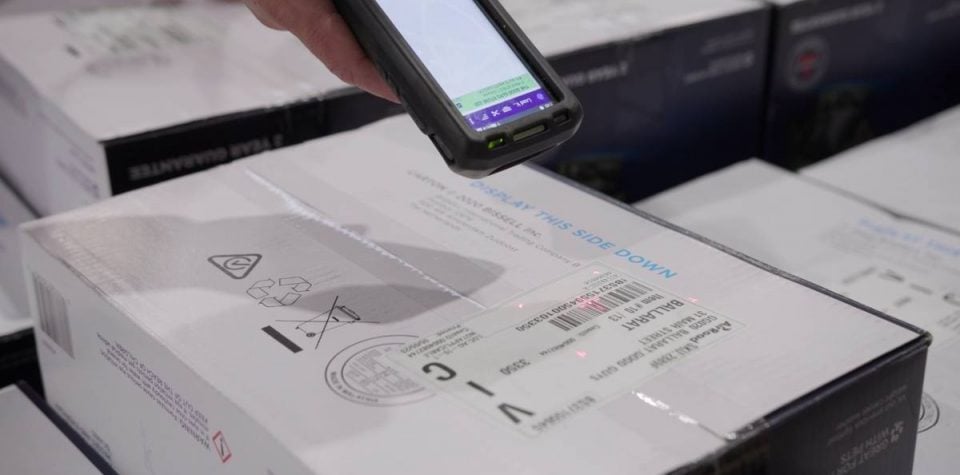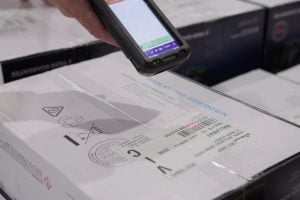And how to make your supply chains more productive.
Table of contents:
– What is load matching?
– Digital load matching
– How does it work?
– How does load matching differ from capacity sourcing?
– Benefits of load matching software
– Is it right for you?
– Ready to start using load matching software?
A recent survey discovered that many leaders in the sourcing, procuring and supplying world believe businesses need to find better ways to improve their carrying capacity and workflows.
This means utilising technology to meet the growing demands of the supply chain. As a result, companies trying to get the best value from their carriers have turned to load matching methods to make their supply chains more productive.
In this article, we’ll discuss load matching, how it works and more importantly, how it might benefit your business.
There’s lots to cover, so let’s dive in…
What is load matching?
Load matching, AKA freight matching, is assigning loads (freights) to carriers (transportation vehicles). In the past, carrier services used truck load boards to designate available spaces to potential customers.
The process accounts for various specifications, such as:
▶️ Route
▶️ Destination
▶️ Capacity
This ensured that load-carrying vehicles were as profitable as possible.
In general, loads outside the general route would come at an extra mileage cost.
Moreover, if the loads weren’t organised effectively, this could result in unloading taking longer and thus costing the company more money.
For these reasons, load matching was a strategic way to save money and provide more effective carrier services.
Digital load matching
As you might imagine, manual load matching isn’t always viable for smaller or medium-sized operations, especially those without the manpower to ensure an optimised carrier service. Even if they could, some considerations could go unnoticed due to human bias or just get lost in the chaos of day-to-day operations. Resulting in more costs for businesses.
In response, companies started developing digital load matching services to streamline these tasks.
It uses AI to perform real-time matches for loads with carriers. This kind of software can determine the capacity and efficiency of different routes as well as the use of vehicles.
It can also relay accurate price estimates for these services in advance. That way, neither carriers nor customers came back short-changed.
How does it work?
Digital load matching comprises various stages:
▶️ Route planning
▶️ Load planning
▶️ Loading and unloading
That said, let’s take a closer look at each of these steps in turn:
Ensuring load delivery sites appear on the same route is integral. Digital load matching software achieves this by grouping loads whose destinations are similar, if not the same, areas.
Furthermore, depending on the type of carrier, the route planning may also have to account for vehicle height. For example, routes with a bridge or tunnel often have height limitations that need considering.
Load Planning
Another important consideration is the fragility of the load. This accounts for the practicality of the route, vehicle type, and packaging for delicate loads.
In the same thread, delivery of temperature-sensitive loads is critical to selecting the appropriate carrier. Lastly, it is also essential to consider the weight limit for the carrier when choosing the best vehicle for a load.
Loading and Unloading
When it comes to making loading/offloading efficient, the order in which goods are organised is also essential. Generally speaking, loads need arranging in reverse order so the last items for delivery are packed first.
How does load matching differ from capacity sourcing?
Load matching is a strategic way to match carriers to loads. It accounts for all of the aspects discussed above. Whereas capacity sourcing is a broader framework that considers the individual ability to carry a load.
That’s as well as other services provided by brokers to secure the capacity for shipments in the transportation spot market. The spot market is used on a larger scale to determine the capability of carrier service to meet consumer demands.
Benefits of load matching software
There are plenty of benefits to using load matching. Not least it can save you money, time, and it tends to be more reliable. That said, let’s take a look at each of these perks in more depth:
Save Money
The most obvious benefit of a load matching approach is that it can save companies money.
By cutting down on empty miles wasted by carriers and reducing fuel costs and other transportation expenses by planning more efficient routes, you can save money.
An analysis of empty miles – carriers that drive without loads – discovered that empty miles accounted for 33% of total miles driven by carriers.
By this estimate, there is potentially an untapped source of revenue available for companies that can optimise their carrier systems with load matching.
Save Time
With digital load matching, in particular, companies can significantly speed up the time it takes to get a load match. Companies no longer have to spend time-consuming hours matching loads themselves or contacting matching services.
Instead, the entire process can be automated so that matches can occur instantaneously.
Some AI matching software can even make predictive matching guesses in advance, so companies can have security that there is a carrier for their goods.
Moreover, load matching technology can integrate onboard vehicles and mobile phones to better monitor the efficiency of various routes.
Boost Reliability
Another consideration when improving a carrier service is that companies can provide better assurances for their customers with more stable and predictable routes.
Many services now have online platforms where customers can see their product on the route, giving them a sense of trust in the carrier service.
Is it right for you?
Only more prominent companies had the resources to carry out comprehensive freight or load matching in the past. Smaller companies had the option of paying matching services.
Still, these prices were often too high to be accessible to everyone. With modern digital load matching, it is far easier and cheaper to match a load to the suitable carrier in ways less prone to human error.
With CNBC’s Joel Dreyfuss predicting that “The next Uber will come from the $1.2 trillion global truck and shipping industry”, why not see what load matching could do for you?
Ready to start using load matching software?
Book a free demonstration with TransVirtual today to see what this type of software can do for your business, or if you’d prefer to have a chat to our expert team, we can help find ways to optimise and save your business time and money!



